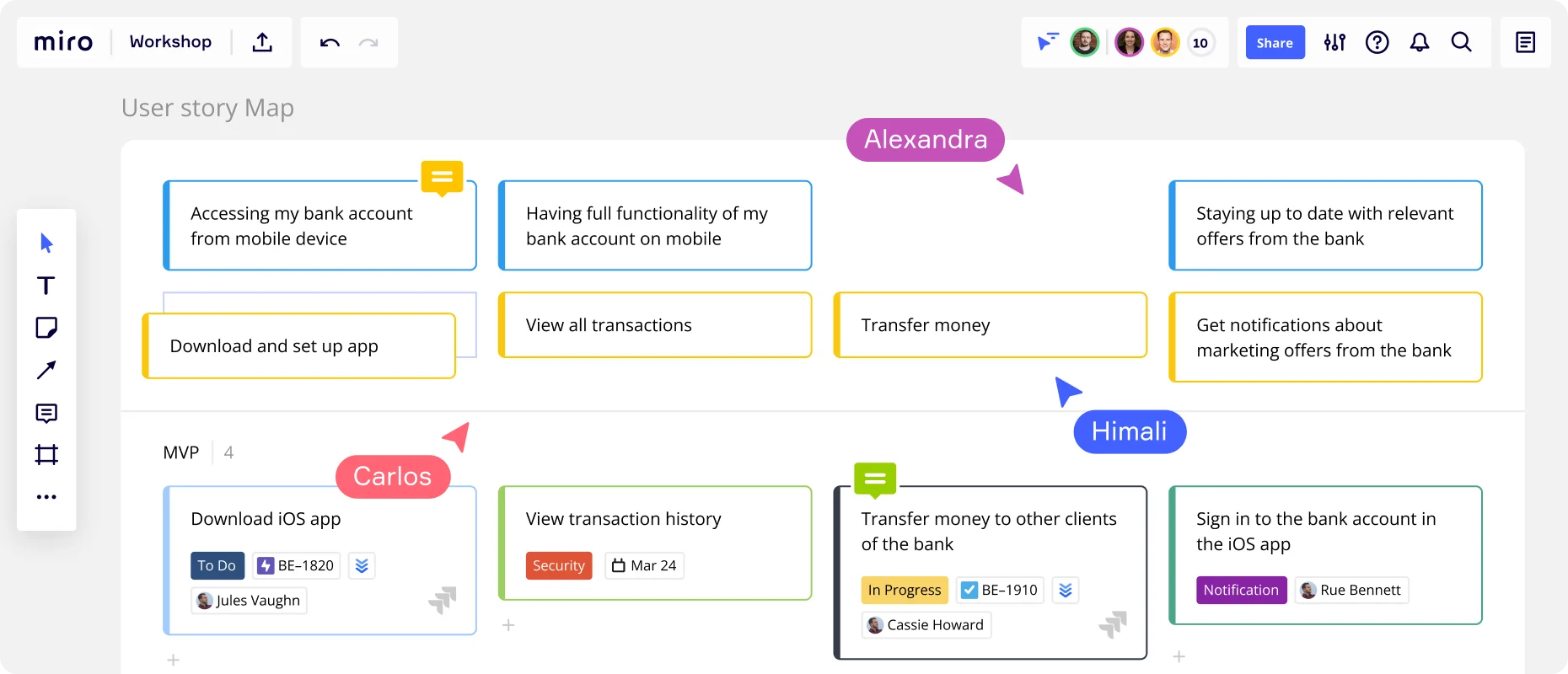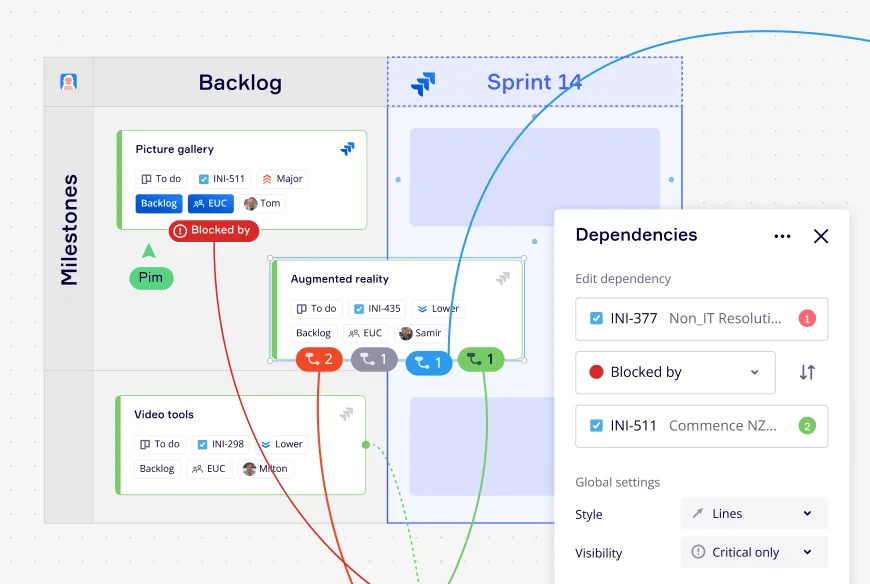
What is user story mapping?

User story mapping: A powerful tool for product development
User story mapping is an essential methodology for navigating the complexity of product development. This tool brings teams together, offering a unified vision of the product journey and its features, ensuring everyone involved in the product's lifecycle is on the same page. The origin of user story mapping is traced back to Jeff Patton, who proposed it as a tool to keep the user's journey at the center of the product development process.
Understanding user stories
User stories act as a fundamental pillar in Agile and Scrum development frameworks. They shift the focus from writing about requirements to talking about them.
The anatomy of a user story
A user story is typically structured as follows: "As a [type of user], I want [an action/goal] so that [a reason/benefit]." This simple, compact structure efficiently encapsulates the user's persona (who), the desired functionality (what), and the rationale or benefit (why).
The role of user stories in Agile
In Agile development, user stories drive iterative development and encourage team collaboration. They ensure that every feature or functionality developed adds value to the end-user and aligns with their needs. This user-centric approach enhances the product's usability and user experience.
User stories and acceptance criteria
Along with the user story, acceptance criteria are defined to determine when a user story is "done." The acceptance criteria specify the conditions the product or feature must meet, providing a clear vision of the expected outcome.
The process of user story mapping
User story mapping is a visual exercise that helps teams organize and manage product backlog in a user-centric manner. Let's delve into the step-by-step process of creating a user story map:
1. Gather the right team: Include everyone contributing to the product development cycle. Having a diverse team ensures that various perspectives are considered.
2. Define the user journey: This step outlines the user's interaction with the product from start to finish. The journey should be linear and comprehensive, capturing all potential touchpoints.
3. Break down the journey into activities: These are the high-level tasks the user performs to accomplish their goal.
4. Break down activities into tasks: Tasks are specific actions within an activity.
5. Write user stories for each task: Finally, based on the tasks, user stories are written. These stories will guide the development process.
This process forms a map visually representing the product's journey from the user's perspective. For example, if we were to map an e-commerce application, the activities might include browsing products, adding items to the cart, checking out, and leaving a review. Each of these activities can be further divided into tasks with corresponding user stories.
Benefits of user story mapping
User story mapping offers many benefits to teams.
Improved understanding of the customer journey: This method provides a holistic view of the user's journey, promoting empathy and understanding.
Prioritization of product features: It allows teams to identify and prioritize features based on their relevance to the user's tasks.
Better team collaboration and understanding: User story mapping encourages dialogue and collaboration, ensuring all team members clearly understand the product development process.
Filling gaps in product development: This process can help identify missed opportunities and areas for improvement.
Increasing the flexibility of product planning: User story mapping allows for adjustments as user needs, market conditions, or business objectives change.

Challenges and solutions in user story mapping
Despite its advantages, user story mapping also presents challenges that teams must navigate.
Case study: User story mapping at Spotify
Spotify provides a successful case study of user story mapping, where this methodology has been instrumental in shaping its product features and enhancing user experience.
A. Identifying user needs
Spotify, with its diverse user base, faced the challenge of tailoring its platform to cater to different listener tastes and habits. The team could visualize the listener's journey through user story mapping and uncover critical user needs, such as discovering new music and revisiting past favorites.
B. Development of key features
The insights gathered through user story mapping led to the development of features like Discover Weekly and Wrapped. Discover Weekly provides users with a curated playlist every week, addressing the need for music discovery. On the other hand, Wrapped offers a yearly overview of the listener's music habits, tapping into the joy of reminiscing.
C. Resulting success
These features improved the user experience and set Spotify apart from its competitors. The success of these features, derived from effective user story mapping, attests to the power of this methodology in driving user-focused product development.
Transform your product development with user story mapping
User story mapping is more than just a tool; it's a mindset that places users at the heart of product development. Its emphasis on understanding the customer journey, prioritizing features, promoting team collaboration, and identifying development gaps is a powerful approach that delivers products that genuinely resonate with users. By effectively using user story mapping, product development teams can create experiences that are functional and meaningful to their users.
References:
Patton, Jeff. "User Story Mapping: Discover the Whole Story, Build the Right Product." O'Reilly Media, 2014.
Cohn, Mike. "User Stories Applied: For Agile Software Development." Addison-Wesley Professional, 2004.
Leffingwell, Dean. "Agile Software Requirements: Lean Requirements Practices for Teams, Programs, and the Enterprise." Addison-Wesley Professional, 2011.
Rubin, Kenneth S. "Essential Scrum: A Practical Guide to the Most Popular Agile Process." Addison-Wesley Signature Series (Cohn), 2012.
Sutherland, Jeff. "Scrum: The Art of Doing Twice the Work in Half the Time." Crown Business, 2014.
Spotify Engineering Culture - Part 1. (2014, March 27). Retrieved July 19, 2023, from https://labs.spotify.com/2014/03/27/spotify-engineering-culture-part-1/